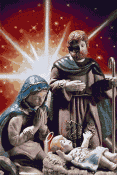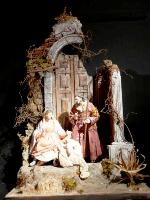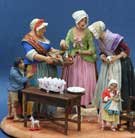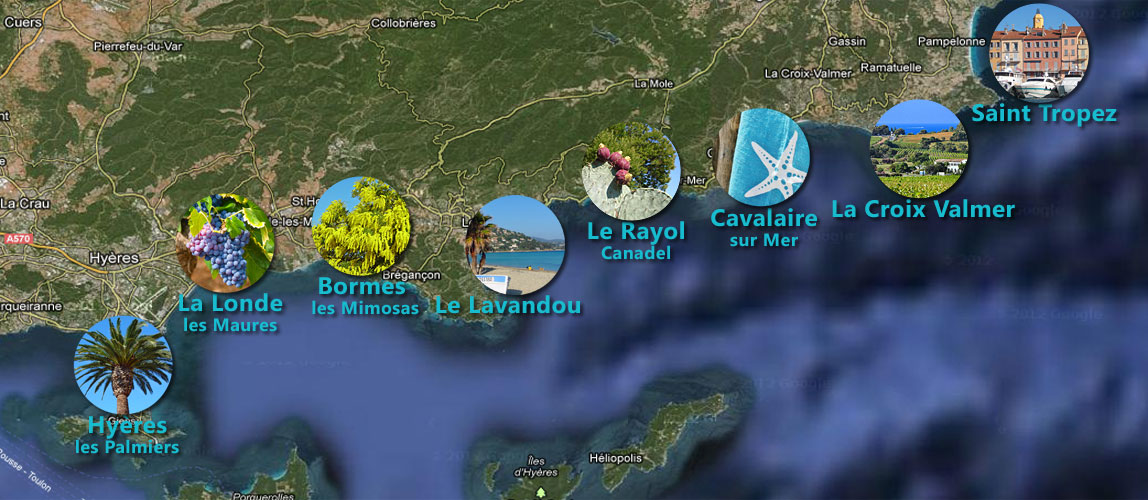Christmas festivities
Christmas celebrates the birth of Christ in the Christian world and dates back to the 4th century. December 25th was chosen  by the Roman church in 354AD to replace Pagan festivals that were celebrated on that day. The birth of Christ had previously been celebrated on January 6th, Epiphany. Before Christianity, the Romans celebrated Saturnalia between December 17th and 24th in honour of Saturn and the Greek god of sowing Cronos (who was chained up Zeus for devouring his own children). During Saturnalia, any social divides disappeared and slaves took the place of masters who served them. Epiphany took over from Saturnalia in the late 4th century. December 25th was also the longest night of the year. To celebrate, Roman converts sacrificed a bull in honour of Mithra, god of light. The festival was called "Sol Invictus" (unconquered sun). The Mithraism cult conflicted with Christianity throughout Europe as far as Brittany and the Danube’s banks. by the Roman church in 354AD to replace Pagan festivals that were celebrated on that day. The birth of Christ had previously been celebrated on January 6th, Epiphany. Before Christianity, the Romans celebrated Saturnalia between December 17th and 24th in honour of Saturn and the Greek god of sowing Cronos (who was chained up Zeus for devouring his own children). During Saturnalia, any social divides disappeared and slaves took the place of masters who served them. Epiphany took over from Saturnalia in the late 4th century. December 25th was also the longest night of the year. To celebrate, Roman converts sacrificed a bull in honour of Mithra, god of light. The festival was called "Sol Invictus" (unconquered sun). The Mithraism cult conflicted with Christianity throughout Europe as far as Brittany and the Danube’s banks.
Origin of the word “Noël”
The origin of the French word for Christmas may be a contraction of the Latin word “novella” which was used to announce good news in the Middle Ages. When a happy event occurred in the  Middle Ages, people would shout “Noël! Noël!” But it may also have originated from the Latin expression “natalis dies” meaning birthday. Some say the word comes from the Gaul term “Noio hel” meaning new sun. It has Latin roots. Italian: Natale. Portuguese: Natal. Spanish: Navidad. Breton: Nedeleg. Provence: Nadal. Northern France: Noué. Normandy: Nouel. Franche-Comté: Nouvé and so on. Major religious Christian festivals and Pagan festivals often intermingled making it difficult to decipher the exact origins of the word Noël. Middle Ages, people would shout “Noël! Noël!” But it may also have originated from the Latin expression “natalis dies” meaning birthday. Some say the word comes from the Gaul term “Noio hel” meaning new sun. It has Latin roots. Italian: Natale. Portuguese: Natal. Spanish: Navidad. Breton: Nedeleg. Provence: Nadal. Northern France: Noué. Normandy: Nouel. Franche-Comté: Nouvé and so on. Major religious Christian festivals and Pagan festivals often intermingled making it difficult to decipher the exact origins of the word Noël.
Christmas tree
It’s one of the most popular symbols of Christmas.  Before the birth of Jesus Christ, the Romans decorated their homes with leaves and branches of holly, ivy and fir to celebrate Saturnalia. The first official mention of fir trees in France was in Alsace in a 1521 edict allowing people to cut down small fir trees; the first descriptions of Christmas trees date back to 1605 in Strasbourg. Back then, the fir tree (a symbol of life or “tree of life”) was decorated with paper roses, coloured paper, red apples and sweets. The Christmas tree first appeared in churches in the 18th century. There was an age-old custom in Germany of decorating the windows, doors and ceiling with branches of ivy. Before the birth of Jesus Christ, the Romans decorated their homes with leaves and branches of holly, ivy and fir to celebrate Saturnalia. The first official mention of fir trees in France was in Alsace in a 1521 edict allowing people to cut down small fir trees; the first descriptions of Christmas trees date back to 1605 in Strasbourg. Back then, the fir tree (a symbol of life or “tree of life”) was decorated with paper roses, coloured paper, red apples and sweets. The Christmas tree first appeared in churches in the 18th century. There was an age-old custom in Germany of decorating the windows, doors and ceiling with branches of ivy.
Christmas crib
In 1223, Saint Francis of Assisi staged the first Christmas Nativity by bringing living characters together with figurines. It was inspired by the “Pastrages” in which shepherds performed the story of the Nativity during midnight mass. These presentations featured characters made of cardboard and pulp.  At the beginning, the only characters were the Holy Family and some shepherds before typical Provencal figures arrived on the scene in the 18th century which is when public cribs appeared and were sometimes mechanical (please see Musée d'Aix en Provence). Their success saw the introduction of songs and proper shows based on the Nativity which made people want their own crib. The last Christmas tradition in Provence, the Pastorale, was originally sketches performed during mass in the run-up to Christmas (its three scenes were Joseph and Mary’s arrival, Jesus’ birth and the arrival of the Three Wise Men). Cribs grew bigger to make way for more characters: the Holy Family, shepherds, “pescadous” (fishermen), “boumians” (bohemians), old people like Grasset and Grassette, the alcoholic grinder and the stammering simpletons Pistachié and Giget. At the beginning, the only characters were the Holy Family and some shepherds before typical Provencal figures arrived on the scene in the 18th century which is when public cribs appeared and were sometimes mechanical (please see Musée d'Aix en Provence). Their success saw the introduction of songs and proper shows based on the Nativity which made people want their own crib. The last Christmas tradition in Provence, the Pastorale, was originally sketches performed during mass in the run-up to Christmas (its three scenes were Joseph and Mary’s arrival, Jesus’ birth and the arrival of the Three Wise Men). Cribs grew bigger to make way for more characters: the Holy Family, shepherds, “pescadous” (fishermen), “boumians” (bohemians), old people like Grasset and Grassette, the alcoholic grinder and the stammering simpletons Pistachié and Giget.
Santon figurines
The first santons (Provencal figurines) were made of breadcrumbs but clay by Liliane Guiomar from Provence gradually gained in popularity.  Although santons were made of unfired clay for a long time making them delicate to handle, the clay is now fired pretty much everywhere. The first well-known santon maker was a Marseille craftsman called Jean-Louis Lagnel in the 1800s. Santon making has since become a traditional Provencal craft. There are now a hundred santon workshops in Marseille, Aubagne, Aix-en-Provence, Arles and countless little villages all over the region. Most have become famous for their art such as Liliane Guiomar who exhibits in Marseille and Japan as well as Escoffier, Rampal and Marcel Carbonel among others who exhibit in Provence. Although santons were made of unfired clay for a long time making them delicate to handle, the clay is now fired pretty much everywhere. The first well-known santon maker was a Marseille craftsman called Jean-Louis Lagnel in the 1800s. Santon making has since become a traditional Provencal craft. There are now a hundred santon workshops in Marseille, Aubagne, Aix-en-Provence, Arles and countless little villages all over the region. Most have become famous for their art such as Liliane Guiomar who exhibits in Marseille and Japan as well as Escoffier, Rampal and Marcel Carbonel among others who exhibit in Provence.
Yule Log
A large tree trunk or stub would be carefully selected a few days before Christmas and a very  precise ritual was followed to prepare the log. It had to be cut down before sunrise then decorated with leaves and ribbons. Two people had to carry it to the hearth and in some regions, the head of the family had to bless it. It was then lit by the youngest in the family or using embers from the previous year’s yule log or soaked in fortified wine. It had to burn as slowly as possible all Christmas Eve and, in some regions, it had to last until Epiphany. The yule log’s ashes were said to be magical. Keeping them protected the house from lightning, bad luck or brought good harvests. precise ritual was followed to prepare the log. It had to be cut down before sunrise then decorated with leaves and ribbons. Two people had to carry it to the hearth and in some regions, the head of the family had to bless it. It was then lit by the youngest in the family or using embers from the previous year’s yule log or soaked in fortified wine. It had to burn as slowly as possible all Christmas Eve and, in some regions, it had to last until Epiphany. The yule log’s ashes were said to be magical. Keeping them protected the house from lightning, bad luck or brought good harvests.
|


